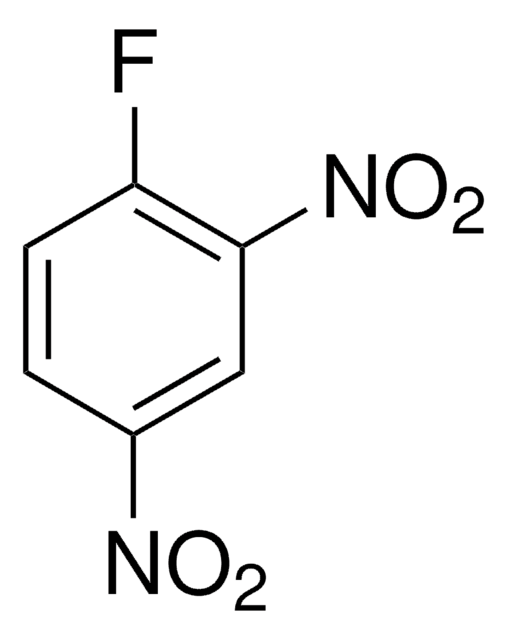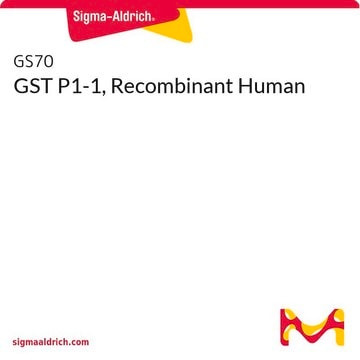138630
1-Chloro-2,4-dinitrobenzene
97%
Synonym(s):
2,4-Dinitrochlorobenzene, CDNB, DNCB
About This Item
Recommended Products
assay
97%
form
solid
expl. lim.
22 %
bp
315 °C (lit.)
mp
48-50 °C (lit.)
solubility
alcohol: soluble (hot)
alcohol: very slightly soluble (cold)
benzene: soluble
carbon disulfide: soluble
diethyl ether: soluble
water: insoluble
SMILES string
[O-][N+](=O)c1ccc(Cl)c(c1)[N+]([O-])=O
InChI
1S/C6H3ClN2O4/c7-5-2-1-4(8(10)11)3-6(5)9(12)13/h1-3H
InChI key
VYZAHLCBVHPDDF-UHFFFAOYSA-N
Looking for similar products? Visit Product Comparison Guide
Related Categories
Application
Biochem/physiol Actions
Preparation Note
signalword
Danger
Hazard Classifications
Acute Tox. 2 Dermal - Acute Tox. 4 Oral - Aquatic Acute 1 - Aquatic Chronic 1 - Eye Dam. 1 - Skin Irrit. 2 - Skin Sens. 1
Storage Class
6.1A - Combustible acute toxic Cat. 1 and 2 / very toxic hazardous materials
wgk_germany
WGK 2
flash_point_f
381.2 °F - closed cup
flash_point_c
194 °C - closed cup
ppe
Eyeshields, Faceshields, Gloves, type P2 (EN 143) respirator cartridges
Certificates of Analysis (COA)
Search for Certificates of Analysis (COA) by entering the products Lot/Batch Number. Lot and Batch Numbers can be found on a product’s label following the words ‘Lot’ or ‘Batch’.
Already Own This Product?
Find documentation for the products that you have recently purchased in the Document Library.
Customers Also Viewed
Our team of scientists has experience in all areas of research including Life Science, Material Science, Chemical Synthesis, Chromatography, Analytical and many others.
Contact Technical Service












